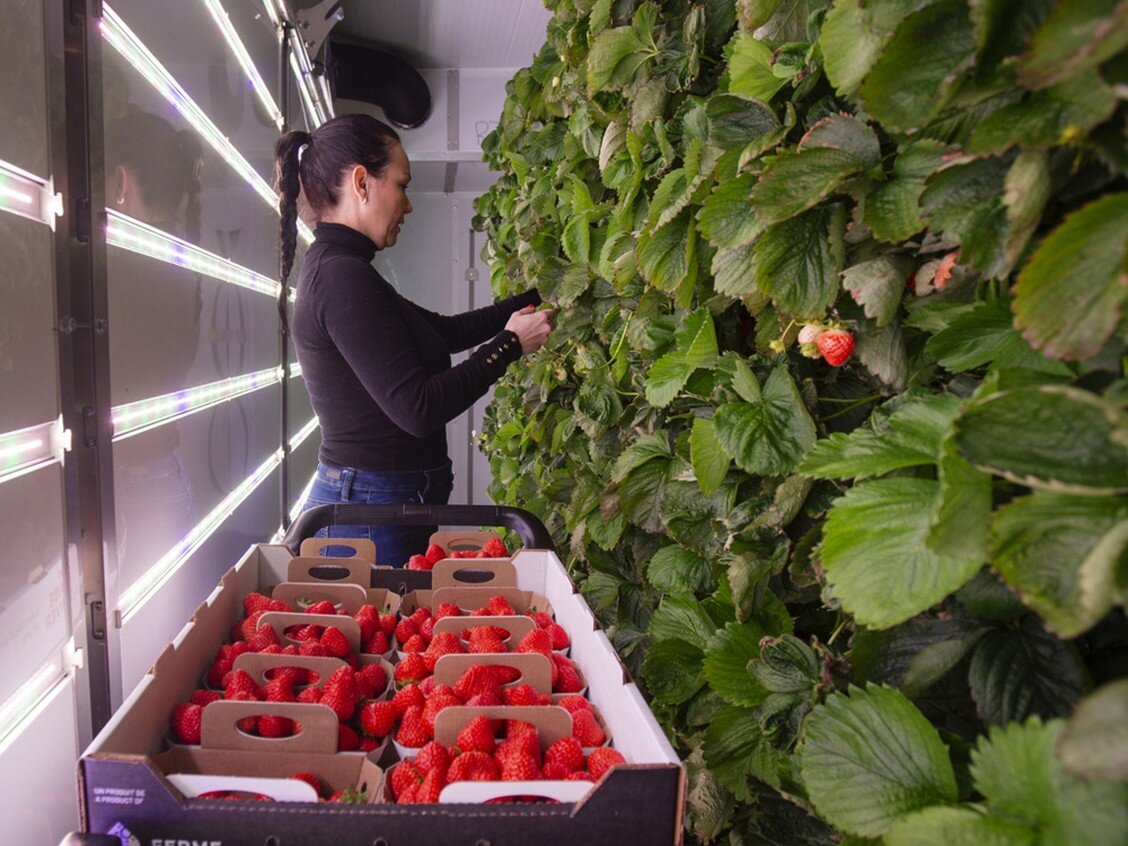Aug 4, 2021
We're In Trouble: Ag Expert Warns On Summer's Heat Dome

A farmer holds a canola plant that has been stricken by drought on a grain farm near Osler, Saskatchewan this past July. A prolonged lack of moisture and hot temperatures has caused significant damage to many crops, the Saskatchewan government said. PHOTO BY KAYLE NEIS/BLOOMBERG
Editor’s Note: Climate change continues to distress farmers, and these challenges are unlikely to improve in the near-future. How can we adapt to these changes to ensure a secure food system for all? While vertical farming is not the answer to all these problems, it can help bring communities fresh nutritious food. We need to continue to innovate and think outside the box.
CONTENT SOURCED FROM THE FINANCIAL POST
Written By: Gabriel Friedman

A worker harvests strawberries at a vertical farm in Brossard, Quebec. Plant density per square meter can be up to five times higher than with traditional greenhouse production and 15 times that of field-grown crops. PHOTO BY CHRISTINNE MUSCHI/BLOOMBERG
The heat dome that swept over western Canada last month roasted cherries on the branch and it cooked oysters, that were buried in the Pacific Ocean, right in their shells.
This week on Down to Business, Lenore Newman, director of the Food and Agriculture Institute at University of the Fraser Valley, explains what climate change means for Canada’s food supply chain.
Newman said technology has progressed to the point that Canada could soon produce its own leafy greens and vegetables all year in giant indoor vertical plant factories.
That would lessen our dependence on California, which is experiencing a long drought, and quite possibly make our food cheaper and more nutritious. As an added bonus, Newman said indoor farms would also help create year-round jobs in an industry that is notorious for its labour difficulties.
Tune in to the podcast on Apple Podcasts, Spotify, Stitcher and Google Play,
where you can also subscribe to get new episodes every Wednesday morning.

